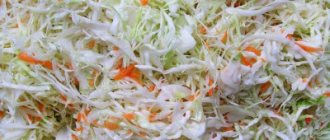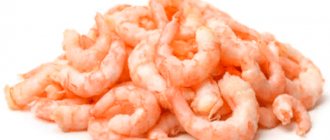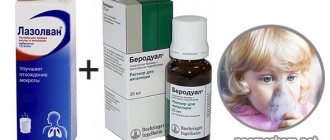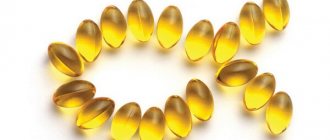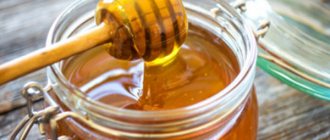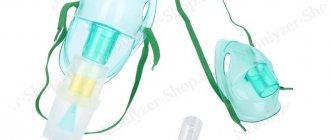Loading... It's no secret that a growing child's body needs vitamins, so fruits must be on the menu. Pomegranate is considered one of the healthiest fruits, because it is not without reason that doctors recommend it to pregnant women. But at what age can a child be given pomegranate, taking into account the characteristics of the fruit? First of all, we are talking about the seeds, which are located in the juicy nucleoli. Do not forget about the increased acid content. Moreover, one should also take into account the characteristic color of the fruit, which ranks high on the list of allergens. And if for adults this is nothing, then for young mothers it is a whole problem.
Composition of pomegranate
Under the inconspicuous peel of the pomegranate hides a real treasure with valuable vitamins and microelements. It brings great benefits to the child’s body, so it is definitely recommended for weakened children.
The fruit contains:
- 15 amino acids;
- natural antioxidant - vitamin C;
- pyridoxine and vitamin B12;
- potassium and phosphorus;
- calcium and silicon;
- aluminum and sulfur;
- copper and nickel;
- tannins.
Only a specialist should evaluate the properties of pomegranate and its usefulness, as well as authorize its use, taking into account the characteristics of each child’s body.
What to do with pomegranate seeds?
In principle, bones do not contain toxic substances; they contain polyunsaturated fatty acids and vitamin E. But they are not absorbed by the child’s body.
In addition, bones can pose a danger to a child:
- Firstly, the baby may choke while eating a pomegranate, and the seeds will get into the respiratory tract. Therefore, parents need to be nearby during meals.
- Secondly, bones that enter the child’s intestines contribute to the formation of fecal stones and can cause intestinal obstruction.
- Thirdly, the bones can fill the vermiform appendix of the cecum and cause its inflammation, that is, appendicitis.
Therefore, for children under 7 years old it is necessary to purchase seedless pomegranates; such varieties exist.
What are the benefits of fruit?
The multicomponent composition: organic acids and amino acids, polyphenols and vitamins, allows the fruit to have the following beneficial effects on the human body, namely:
- increasing immune barriers, especially resistance to colds;
- mild diuretic and choleretic effects;
- increase in hemoglobin parameters;
- improvement of rheological properties of blood;
- antiseptic effect;
- strengthening gum tissue;
- improved appetite;
- toning of nervous structures;
- astringent properties.
Children are given both freshly squeezed juice and the pulp of the fruit itself.
Is it possible to eat pomegranate with seeds and what is the risk of appendicitis?
Many children eat pomegranates without spitting out the seeds, which causes concern among parents, since there is a theory linking the consumption of this fruit with seeds to the appearance of appendicitis.
Doctors say that such a connection has not been proven, and difficult-to-digest food, which is pomegranate seeds, is more likely to cause intestinal intussusception rather than inflammation of the appendix. Although, this pathology is caused not only by eating large quantities of pomegranate seeds, but also by an excess of legumes and seeds in the diet.
In small quantities, pomegranate seeds are harmless and are passed unchanged in the feces. Only a significant amount of eaten seeds poses a danger to the health of children. Therefore, when giving a baby a pomegranate, parents should still take into account the age of the child and the immaturity of the child’s intestines.
Precautionary measures
However, in addition to many of the beneficial properties described above, pomegranate also has some side effects. Therefore, it is recommended to ask your pediatrician in advance at what age you can start including this fruit in your diet.
It is necessary to refrain from taking it in the following cases:
- with individual intolerance;
- with hyperacid gastritis;
- with a tendency to constipation;
- with weak tooth enamel.
The peel of the fruit contains dangerous alkaloids; they are toxic to the child's body, so only an adult family member should peel the fruit.
In what form is it best to give to a one-year-old child?
Pomegranate for children 1-3 years old is best given in the form of juice. It is important to remember moderation and not give this product every day.
Give your baby only sweet fruits, since sour pomegranate juice contains too many acids that can harm the baby’s stomach.
In the next video you will learn how to quickly peel a pomegranate.
Side properties
If used incorrectly, for example, in excess at one time, pomegranate complementary foods can cause harm to the child’s body. Most often observed:
- allergic condition: various skin rashes, redness, itching;
- stomach pathologies: organic acids provoke exacerbation of gastritis;
- stool disorders: since the astringent effect of the fruit alleviates diarrhea, it is sometimes recommended for frequent diarrhea in children, but if there is a tendency to constipation, the fruit can cause intestinal problems.
Such nuances must be taken into account by the pediatrician and parents when deciding whether pomegranates and its components can be taken by children.
Cautions
You need to be careful so that the pomegranate peel does not get caught by your baby.
A fruit rich in vitamins and minerals, if consumed incorrectly, can not only bring benefits, but also cause irreparable harm. Health hazards may arise from:
- Peel;
- Pericarp:
- Bones.
The peel and pericarp contain alkaloids that can cause severe poisoning. There are no toxic or harmful substances in the bones, but they can contribute to the development of fecal stones and provoke an attack of appendicitis.
Fruits with a high acid content can harm the baby's digestive system. A few years ago, doctors did not recommend giving this fruit to children under 5 years of age. And now sour pomegranate, and its juice can only be given from 7 years of age.
New variety of pomegranate - seedless
Selection does not stand still - safe sweet varieties of pomegranate have been bred. Purchasing seedless fruit to feed your baby will greatly simplify the mother’s task of introducing this product into the child’s diet. But the peel and pericarp should not get into the child’s mouth.
The first introduction to sweet pomegranate for children is recommended at 10 months of age. Like any red fruit, pomegranate can cause allergic reactions. To a lesser extent than citrus fruits, strawberries, and egg yolks, but the threat exists. Therefore, the first time you need to start with a very small dose. It is best to squeeze the juice out of the grains and dilute it with water in a ratio of 1/2. For the first test, 1 teaspoon of the delicacy is enough.
If the child’s body accepts diluted juice normally (after several tests), it can be given whole juice, gradually increasing the dosage. Children should be given sweet fruit juice with a low acid content per year. Adding sugar to a drink will not protect the child’s stomach from their effects.
Pomegranate, how to cut it correctly.
How to properly include it in your diet
If a fruit approved by a specialist for consumption has not yet been purchased, then when choosing it in a store you need to pay attention to the following characteristics of the fruit:
- the peel has a uniform pinkish color;
- the presence of several brown spots is quite acceptable;
- no green spots or signs of rot.
It is necessary to purchase fruits from trusted suppliers. Before feeding the baby, you should try the pulp: if it is sour, it is better not to give this fruit to the baby.
The optimal age for introducing pomegranate: after 9 months, half a teaspoon, and even then with water. The best option is freshly squeezed juice. Oversaturation of a child's body with vitamins can lead to rashes: hives or intense itching. A high concentration of ascorbic acid contributes to tooth decay, since the enamel tissue has not yet had time to fully form and is characterized by increased fragility and susceptibility to fruit acids.
It is recommended to introduce pomegranate juice into children's diet gradually, diluting the drink with less and less water each time. So, the permissible volume of red juice per week should not exceed 80–100 ml, it is divided into 2–3 doses.
When can children eat pomegranate with seeds?
It is difficult for children under two years old to explain why the seeds from the “berries” need to be spat out. At this time, the baby actively tastes everything, turning every meal into a game. However, the presence of bones in the intestinal loops provokes disorders of its activity.
Regular consumption of the fruit after the child reaches the age of two will strengthen his immune barriers and improve the rheological parameters of the blood. Therefore, it should be present on the table 1–2 times a week, but no more than ? large fruit.
Experts do not advise young parents to be scared if their child swallows even a few pomegranate seeds. In most cases, they leave the intestines unchanged. Only a large number of fruit grains consumed at one time can pose a health hazard.
Standards of use
A burning question for all parents: how much tasty and healthy fruit and at what age is it permissible to give to a child?
Most pediatricians are of the opinion that it is quite acceptable for children from one to three years old to be given juice diluted in equal proportions twice a week, but not more than 100 ml at a time.
After three years, the volume of the vitamin drink is increased to 180–200 ml, and at 4–7 years old it is allowed to drink 250–300 ml of diluted juice. Younger schoolchildren are also given 350–400 ml of pomegranate drink.
If parents prefer that vitamins enter the child’s body directly with the pulp of the fruit, then twice a week they are allowed to eat no more than ? large fruit for children under three years of age, and ? fruit up to 7 years, and then it is permissible to include one small fruit per meal in the diet. However, each child has a different structure of the digestive organs, so the pediatrician gives only general recommendations. Parents evaluate their baby’s reaction to the fruit individually.
How to make pomegranate juice
Freshly squeezed pomegranate juice is beneficial for children's bodies. At the same time, it should be consumed immediately after preparation, since this product contains the maximum beneficial properties in the first 20 minutes after preparation.
Preparing juice from pomegranate fruits is not difficult. The procedure can be carried out in several ways:
- Through a juicer, but in this case you will get a lot of pulp and not enough of the drink itself.
- Using a citrus press. It is enough to cut the fruit in half and squeeze out the juice like an orange.
- You can prepare the drink by squeezing the juice by hand. The whole fruit needs to be gently kneaded with your hands, then a small hole is made in it and the drink is squeezed into a glass.
- The grains are placed in a sieve and crushed using a masher to obtain juice.
To prepare the drink, buy ripe fruits that will not have stains or other damage.
Pomegranate is one of the healthiest fruits, the consumption of which will help the growing body grow and develop properly. However, children should consume it in limited quantities and only if well tolerated.
Is store bought drink allowed?
Useful properties are inherent only in freshly squeezed pomegranate juice . A store-bought product cannot be called a healthy drink suitable for children. It contains a large amount of hidden sugar, which is dangerous for an unformed body.
It is preferable to make this drink at home or buy fresh juice at specialized outlets. If this is not possible, all that remains is to choose a quality store-bought product. It is allowed to be given to children only from 3 years of age.
How to choose a good product?
Before purchasing, you need to pay attention to the following nuances:
- the finished product must be in glass containers;
- shelf life - up to 6 months, but in general, the shorter the better;
- first-press juice;
- inspect the contents; the presence of sediment indicates the naturalness of the product;
- manufacturer - preferably Azerbaijan, Sochi, Dagestan, Crimea, Greece, where it is produced in industry in large quantities;
- the presence of preservatives, dyes, flavors or other juices reduces the quality.
Price in Moscow and St. Petersburg
The high price is another indicator of the quality of this drink. Juice can be inexpensive if it is sold in the country of origin. The cost of bottled pomegranate juice in Moscow ranges from 100-500 rubles, in St. Petersburg from 140 rubles per liter. Fresh pomegranate juices cost on average 400-900 rubles per 200 ml.
Thus, pomegranate is a valuable product for children . And freshly squeezed juice is especially useful, because industrial drinks lose their most important properties during heat treatment. But it is important not to overuse, otherwise the consequences may affect the child’s health.
If you find an error, please select a piece of text and press Ctrl+Enter.
Pomegranate and its properties
Among the beneficial properties of pomegranate are the following:
- The high content of vitamins makes the fruit a real helper for the immune system, especially during periods of vitamin deficiency. Pomegranate contains: vitamins C, B12, B6, P, trace elements, minerals and fiber;
- The strengthening effect of pomegranate helps with frequent loose stools (read the article Diarrhea in Infants>>>);
- Everything about pomegranate is beneficial: from the juice to the pulp to the seeds. Partitions and peels are also used in the creation of medicines;
- Increases hemoglobin due to the high iron content, which is necessary for patients with anemia;
- Choleretic, diuretic effects;
- Useful for the nervous system with its tonic properties;
- Improves blood clotting;
- Affects increased appetite;
- It also has an antiseptic effect, so it is often used as an aid for throat diseases;
- Strengthens weak gums.
Important! It is necessary to choose the right pomegranate so that it does not turn out to be unripe or rotten. It should be firm and not bend under your fingers. Make sure there are no too dark spots.
Can there be any harm from using it?
Pomegranate not only has positive properties, but can also harm the child’s body:
- Allergy . The fruit may cause an allergic reaction. If a child has a red rash on the body, itching, it must be excluded from the diet for a while.
- Stomach diseases . Due to the presence of a large amount of acid in the fruit, it is contraindicated for children with digestive problems. Otherwise, it will only make you feel worse.
- Oxaluria . Pomegranate is completely prohibited for children with urolithiasis.
- Enamel destruction . The juice can harm your teeth as it contains many different acids. Therefore, it should be drunk diluted and preferably through a straw.


